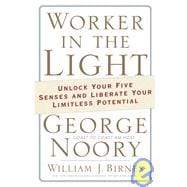
Note: Supplemental materials are not guaranteed with Rental or Used book purchases.
Purchase Benefits
What is included with this book?
| Acknowledgments | p. 11 |
| Introduction | p. 13 |
| The Ouija Board | p. 17 |
| The Backgrounds of Remote Viewing | p. 43 |
| Process and Time Travel | p. 67 |
| The Humanoids | p. 79 |
| Shafica Karagulla and Higher-Sensory Perception | p. 99 |
| The Psychic Superhighway, Shamanism, and the Power of Dreams | p. 115 |
| Lucid Dreaming into the Collective Great Link | p. 129 |
| The Art of Lucid Dreaming | p. 145 |
| Doom, the Coed, the Teaching Assistant, the Dark Side | p. 165 |
| The Practice: Learning How to Remote View | p. 185 |
| Becoming Intuitive | p. 205 |
| Working the Matrix: The Random Intuition of Exercise | p. 227 |
| Exercises in Positive Projection and Focused Consciousness | p. 247 |
| Exercise in Out of Body, Psychic Projection in Time, and Levitation | p. 269 |
| Intuition, Indigo Children, Crystal Children, and Childhood's End | p. 295 |
| Index | p. 313 |
| Table of Contents provided by Ingram. All Rights Reserved. |
The New copy of this book will include any supplemental materials advertised. Please check the title of the book to determine if it should include any access cards, study guides, lab manuals, CDs, etc.
The Used, Rental and eBook copies of this book are not guaranteed to include any supplemental materials. Typically, only the book itself is included. This is true even if the title states it includes any access cards, study guides, lab manuals, CDs, etc.
Excerpted from Worker in the Light by George Noory, William J. Birnes
All rights reserved by the original copyright owners. Excerpts are provided for display purposes only and may not be reproduced, reprinted or distributed without the written permission of the publisher.